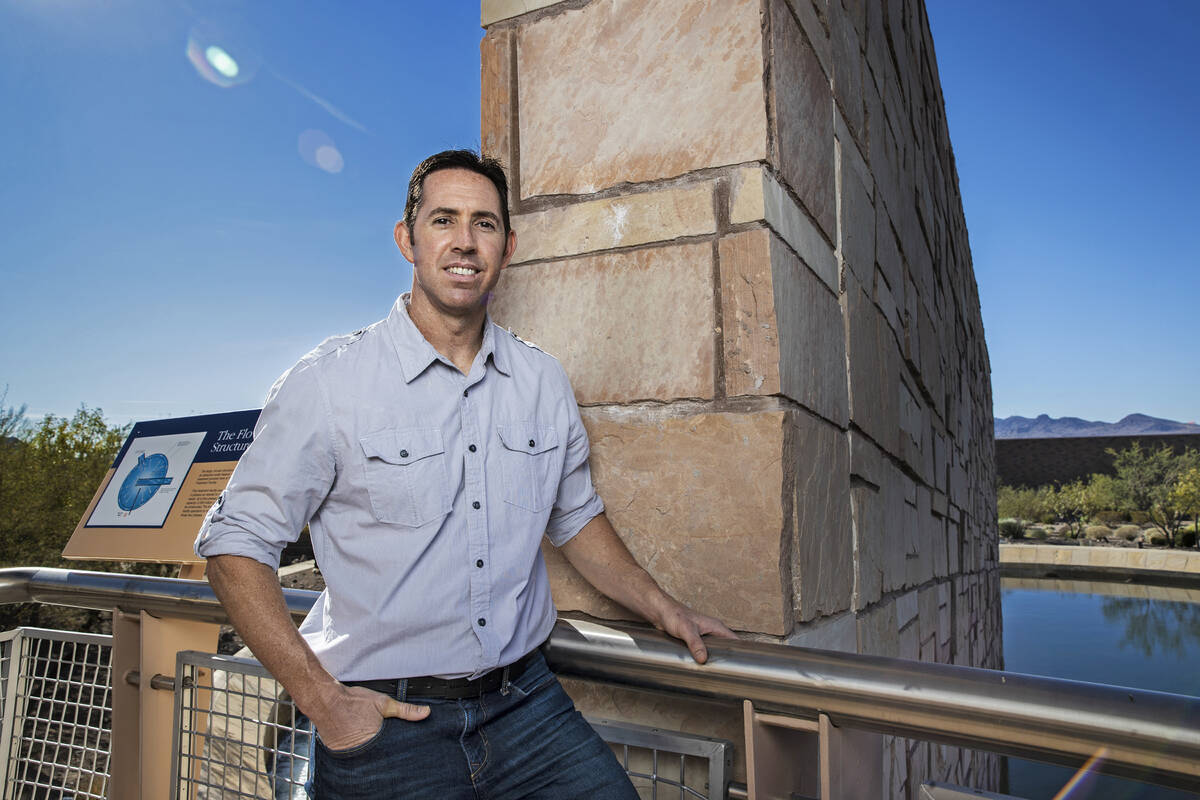Polio case in NYC triggers surveillance preparation in Southern Nevada
A case of polio that partially paralyzed a young unvaccinated man in New York City has caused new concerns about an old disease, prompting Southern Nevada to prepare to look for the virus in the community’s wastewater.
Early in the COVID-19 pandemic, Southern Nevada agencies launched wastewater surveillance to anticipate disease trends for the novel coronavirus. Recently they began to use it to detect levels of monkeypox in the community.
With the detection earlier this month of polio RNA in wastewater in New York City, researchers “have been in communication with local public health officials to see how we might be able to help with surveillance,” said Daniel Gerrity, principal research microbiologist for the Southern Nevada Water Authority.
If local public health authorities determine it’s warranted, the current surveillance effort could quickly be expanded to include polio, he said. The water authority and other entities such as UNLV already are laying the groundwork.
Within wastewater are viruses shed by infected people through saliva, urine and feces, which enter the wastewater system via sinks, shower drains and toilets.
Wastewater surveillance provides an “unbiased look at the level of infection in the community, because it doesn’t require people to go out and get tested,” Gerrity said.
Finding the virus in New York City’s wastewater indicates that there are more polio cases that so far have gone undetected, Dr. Paul Offit, director of the Vaccine Education Center at Children’s Hospital of Philadelphia, said in an interview.
The single case detected in New York is “very concerning because I think it represents the tip of a bigger iceberg,” said Offit, a professor of vaccinology at the University of Pennsylvania.
Tip of the iceberg
Polio was once one of the most feared diseases in the country. In the early 1950s, before a vaccine, the disease paralyzed 15,000 people a year in the U.S., according to the Centers for Disease Control and Prevention. Older people can recall as children being kept from playing outside during outbreaks and from going to the local swimming pool.
About one in 200 polio infections resulted in paralysis, said Offit, who since the 1990s has served on a vaccine advisory panel to the Food and Drug Administration.
Vaccination then all but eliminated polio from the country. The last case to originate in the United States of naturally occurring poliovirus was in 1979, according to the CDC. The last time a traveler brought it into the country was in 1993.
However, in rare instances over the last few decades there have been cases of polio caused by a particular type of vaccine — an oral vaccine with a live, weakened form of the virus. This type of polio vaccine has not been used in the U.S. since 2000. Cheaper and easier to administer, it is still used in other countries.
The New York man, unvaccinated himself, contracted a vaccine-associated strain.
In the 1990s, when Offit joined a vaccine advisory panel to the Food and Drug Administration, his goal was to put an end to the use of the live-virus polio vaccine in the U.S. That vaccine, he said, results in an estimated one case of polio per 2.4 million doses.
There have been several polio strains induced by the live-virus vaccine. The vaccine-associated strain that infected the New York City man results in about one case of paralysis per 1,900 cases. This suggests that there are more infections than the single detected case that resulted in paralysis, Offit said, which is borne out by the polio virus being found in the city’s wastewater.
The man has been identified in media reports as living in an Orthodox Jewish community with low vaccination coverage.
‘Game of Russian roulette’
People who aren’t vaccinated against polio are at risk for the disease, Offit said, especially if they live in an under-vaccinated community where polio has been detected.
He urged anyone who has not been vaccinated against polio to get vaccinated. “It’s not worth playing a game of Russian roulette,” he said. Immunization against polio protects a person for life.
He supports the use of wastewater surveillance in Las Vegas and other communities to better understand the current risk from polio.
The Southern Nevada Health District did not respond to a question about whether the wastewater surveillance for polio would be launched. However, it provided a statement that said in part, “It is important to remember that polio vaccine is one of the required immunizations for all students in Nevada. The Health District reminds Southern Nevadans to keep their immunizations current, including getting booster doses of childhood vaccines for their children.”
The Nevada Department of Health and Human Services did not respond to questions about polio vaccination rates.
Nevada falls within the highest tier for polio vaccination in kindergartners, at between 95.8 percent and 98.9 percent, according to the CDC. However, levels of vaccination will vary by community, which is the case in the state of New York, which overall has a high vaccination rate.
The water authority’s Gerrity noted that wastewater surveillance can be targeted to particular areas within a community.
“This issue might warrant targeted surveillance in areas with low poliovirus vaccine coverage,” he said.
Contact Mary Hynes at mhynes @reviewjournal.com or 702-383-0336. Follow @MaryHynes1 on Twitter.
















